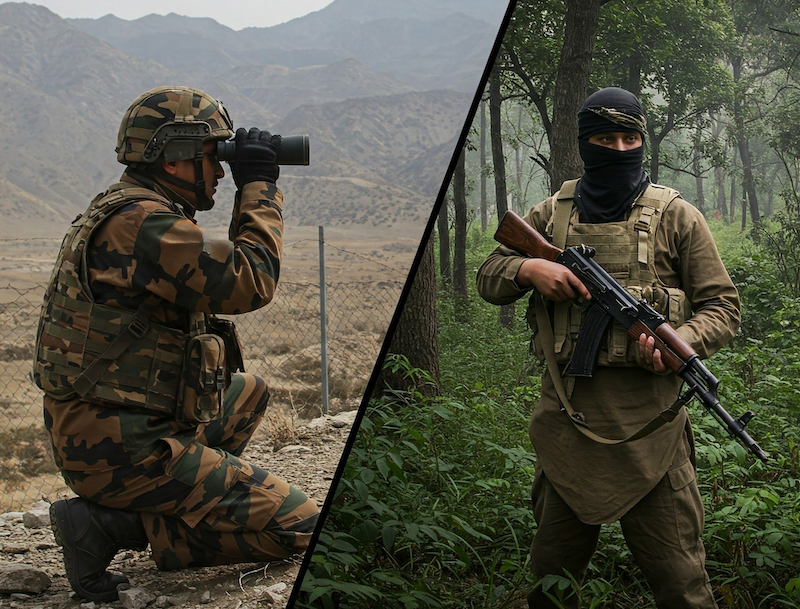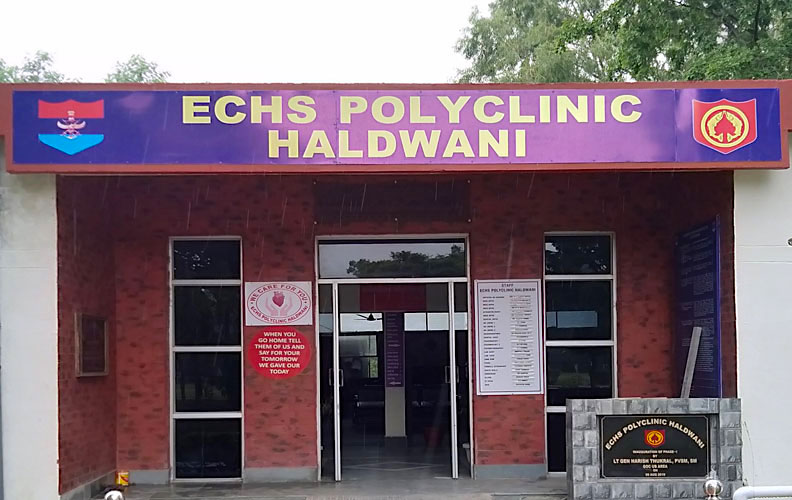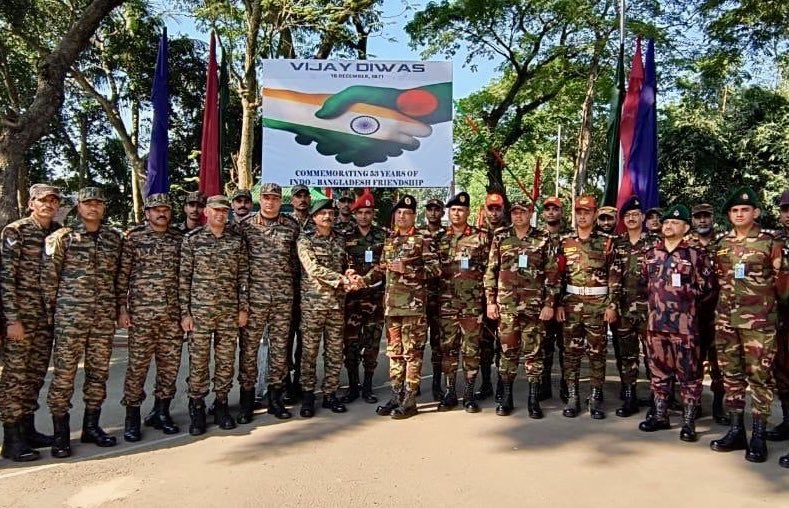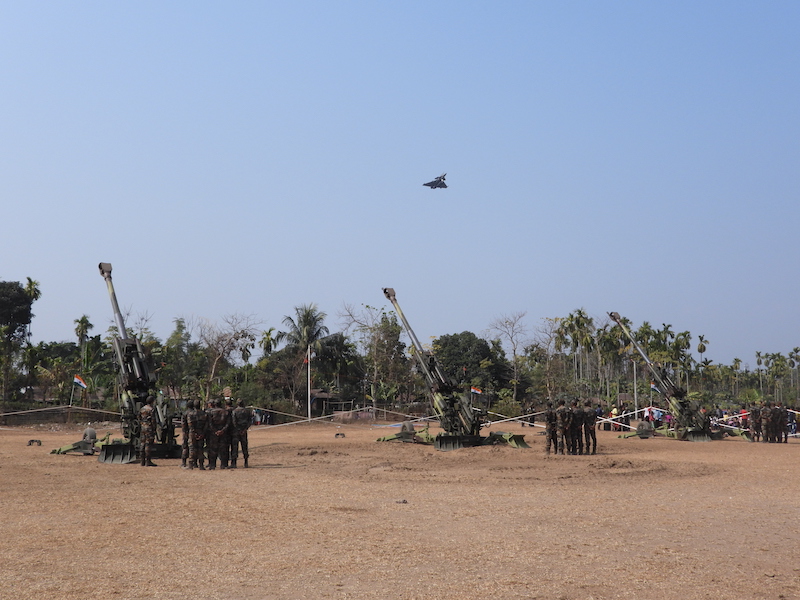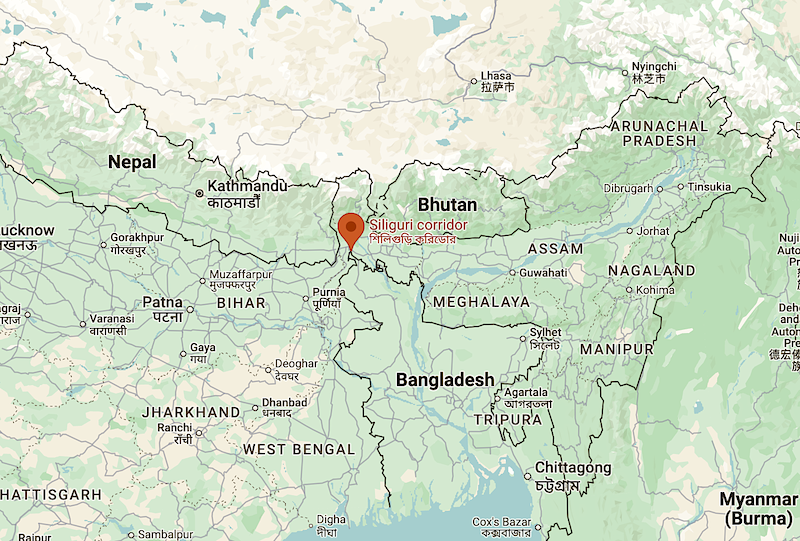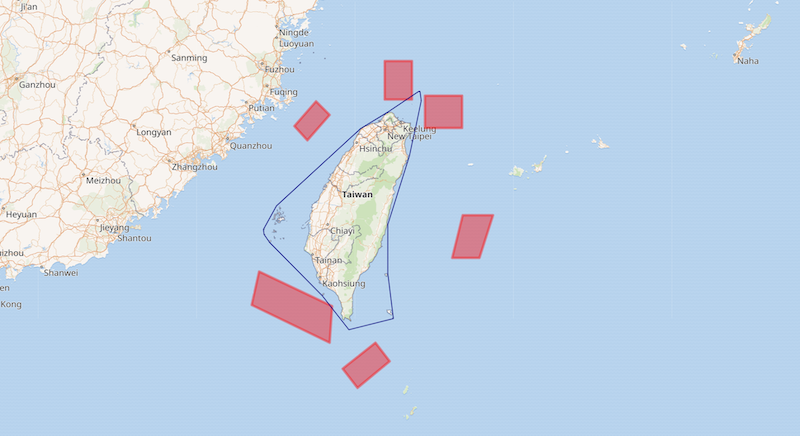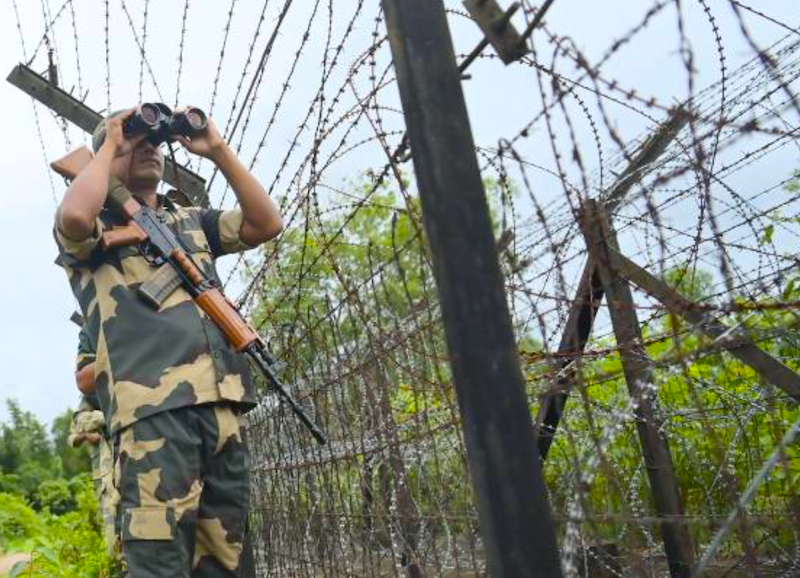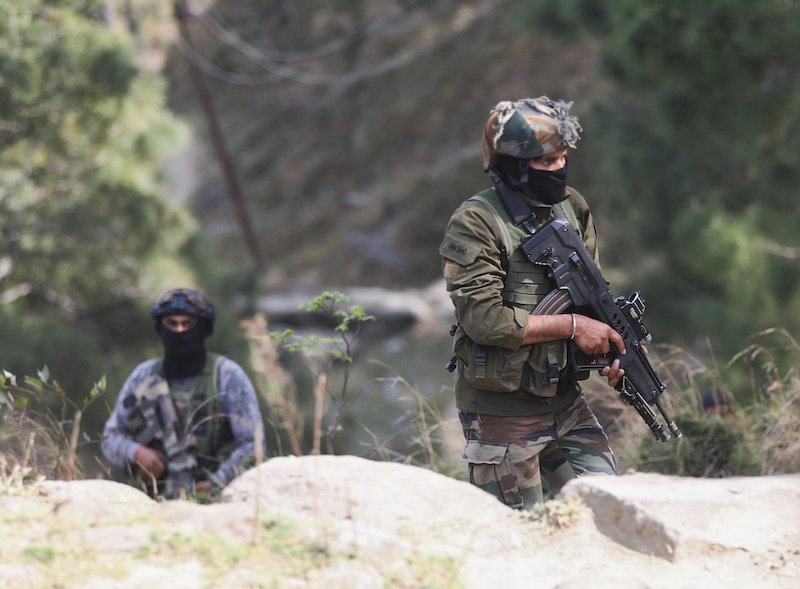 Indian Army’s Para Special Forces commandos during a recent encounter with militants in Kathua, Jammu & Kashmir. (Viral photo via X)
Indian Army’s Para Special Forces commandos during a recent encounter with militants in Kathua, Jammu & Kashmir. (Viral photo via X)
Jammu & Kashmir continues to grapple with both cross-border- and locally sponsored militancy. This security challenge is not static but rather fluctuates in intensity and location. While the Kashmir valley has historically borne the brunt of terror and militant activities, the Jammu region now faces equal threats. The cross-border terror and insurgency sponsors show no indication of relenting, denying local populations the opportunity to experience genuine peace. Brief periods of calm are regularly disrupted by successive militant encounters.
Despite these challenges, the parliamentary and state assembly elections were conducted peacefully in the Union territory, thanks to a comprehensive security approach. All stakeholders collaborated effectively to secure the region and prevent the cross-border handlers and their local associates from disrupting these democratic exercises.
Read also: India must consolidate its western front to tame Pakistan
Refining the Countermilitancy Strategy
The fight against militancy demands a well-calibrated, holistic approach. This necessitates an effective human intelligence network spanning the entire area of concern, from the border (zero line) to the hinterland across the Jammu region. The complete threat area requires structured security deployment in the second and third tiers, similar to the counterinsurgency model used against left-wing extremism, with company operating bases covering all routes to population centres and forested areas that militants might use for concealment, planning, and operations.
Clear delineation of responsibilities for the second- and third-tier deployments is essential. Currently, while the border deployment appears robust, structured deployment in the second and third tiers seems inadequate. Effective intelligence gathering and properly structured deployment would enable a truly holistic approach, requiring all countermilitancy agencies to function as a cohesive team. Such deployment would not only bolster the local confidence but also restrict the militant movement corridors and deny them operational space.
Read also: Spike in J&K militant attacks – Time to reanalyse and restrategize
Lessons from Recent Operations
In the recent Kathua encounter, the security forces fought courageously and neutralized militants, but analysis suggests the need for refinements in executing the holistic approach. Three main elements are crucial in the fight against militancy in J&K: the intelligence apparatus, the security forces, and the civilian population.
Enhanced synergy and trust among these elements are vital. In this battle, the civilians must serve as the eyes and ears of the security forces, as countermilitancy operations cannot succeed without popular support. The chief minister of Jammu & Kashmir, Omar Abdullah, accurately observed that militancy cannot be eliminated without the public’s cooperation.
During the operation, two militants were neutralized, but tragically, four police personnel sacrificed their lives, and several others were injured. It appears likely that some militants escaped, expanding the threat area and complicating the security forces’ task. This calls for a thorough analysis to extract appropriate lessons.
Read also: Bringing Jammu & Kashmir out of the quagmire of militancy
According to the available information, hidden militants unleashed heavy fire on the police, triggering a gunfight. The area was cordoned off and a search operation launched, but no further contact with the militants was established, suggesting they may have silently escaped the cordon. The search yielded M4 carbine magazines, sleeping bags, tracksuits, food packets, and polythene bags.
The operation was apparently based on information provided by a woman and her husband who had been captured by the militants but managed to escape. One must consider whether the militants deliberately left behind excess supplies as bait to concentrate the security forces in one area while facilitating their own escape elsewhere. The subsequent encounter, fierce firefight, and probable escape of some militants indicate they were well-prepared to engage the security forces and had strategically planned to expand their operational area, keeping the Jammu region under threat.
Intelligence Challenges
Questions arise regarding intelligence: Was there specific intelligence about cross-border militant movement, and if so, was it shared with the Border Security Force? The international border along the Jammu region is heavily fortified with ground forces, technical surveillance, clear observation along water channels, and comprehensive area domination. Given this robust security infrastructure, infiltration across the international border seems highly improbable. Speculating about infiltration without evidence is both demoralizing and potentially inaccurate.
The intelligence effectiveness and insurgency levels are inversely proportional. Better coordinated intelligence means accurate, real-time information on the militant movements, leading to well-coordinated actions and successful neutralization operations. What’s needed is robust cross-border and hinterland human intelligence (HUMINT) targeting the over-ground worker networks and abandoned structures in forested areas.
Read also: Robust HUMINT network is the key to defeat militancy in J&K
Human intelligence unfortunately remains a grey area requiring attention and strengthening. The strategic planners from across the border invest significantly in intelligence gathering and operational planning, encompassing movement from launch pads, infiltration, movement to hideouts with local support, and finally, execution of attacks. There is a need to cultivate comprehensive human intelligence networks across the entire threat spectrum to eliminate and dominate the overground networks. This may not be possible without strong, structured hinterland deployment to instil security confidence among the population and restrict likely routes to forested areas.
A Three-Tier Intelligence Framework
A three-stage human intelligence network must be developed to defeat militancy:
* Cross-border human and technical intelligence
* Border intelligence
* Intelligence on movement into depth areas/hinterland
With robust human intelligence, it becomes possible to locate and neutralize the militants at the point of infiltration or in the second or third tiers, denying them the opportunity to merge with the local population or disperse into forested areas where they can operate on their own terms, complicating the security forces’ task.
Read also: Defeating Naxalism by March 2026 is an achievable target
The Jammu region, especially the hinterland, requires structured deployment and effective human intelligence covering identified threat areas. All elements of the countermilitancy apparatus must work in a coordinated manner as a unified team. Unless human intelligence is strengthened and structured deployment ensures aggressive domination of areas of concern, security gaps will persist, advantaging the militants.
The leadership should emulate the successful left-wing extremism model, combining boots on the ground, technical surveillance, and human intelligence to bridge security gaps. This integrated approach has proven effective in other counter-insurgency contexts and could significantly enhance security operations in Jammu & Kashmir.
Disclaimer: The views expressed in the article are the author’s own and don’t necessarily reflect the views of India Sentinels.
Follow us on social media for quick updates, new photos, videos, and more.
X: https://x.com/indiasentinels
Facebook: https://facebook.com/indiasentinels
Instagram: https://instagram.com/indiasentinels
YouTube: https://youtube.com/indiasentinels
© India Sentinels 2024-25

